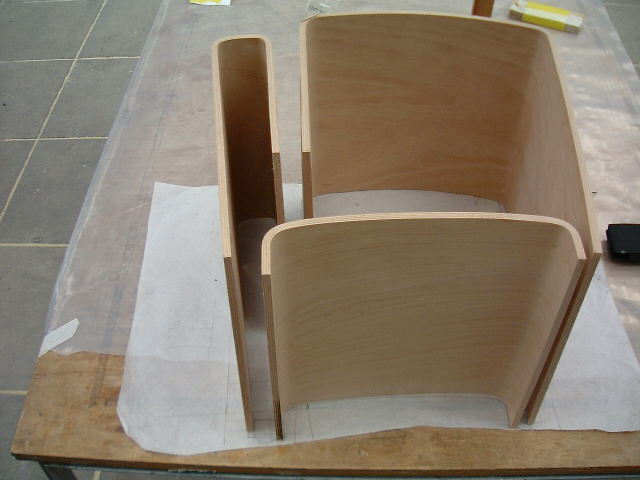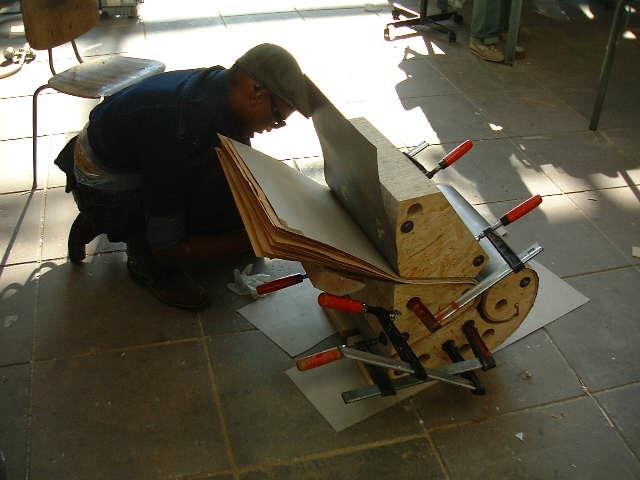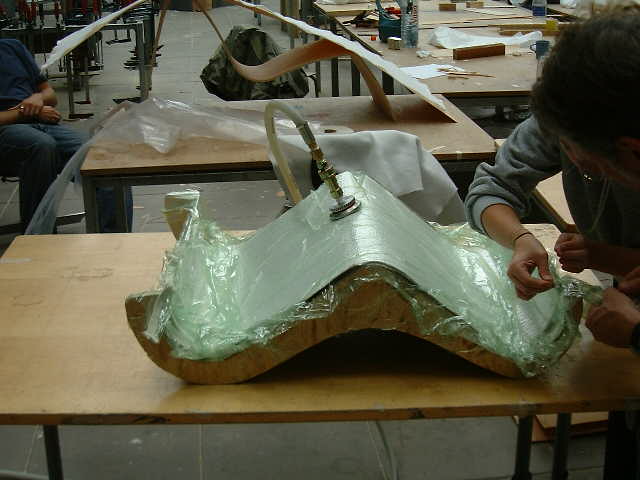Workshop
Why produce formpressed veneer at all if you for furniture use can design more comfortable chairs that are upholstered, cheaper in plastic, lighter in solid wood and even using less glue?
Because formpressed veneer provides a good compromise between the positive sides of the above. Because it is wood with warm and fine tactile surfaces. Because it can be formed into light and organic shapes. Because formpressing, with the right arrangement of the veneer layers, can be formed into strong and material-saving structures.
My workshops begin with a theoretical introduction to the technical prerequisites for formpressing and a review of the relevant tree-technology. Design parameters, benefits and limitations of different applications are reviewed - and hopefully challenged.
The largest part of the workshop will be used to make molds and fixtures. That in itself gives an understanding of the technique. In addition to making molds for industrial use, methods especially suitable for prototyping and one-offs will be tested.
The workshop is quite 'hands-on' and we try and present as many different methods as possible to each other. We are going to press veneer in 2½D and get an understanding of how veneer reacts under pressure. Theory and application of 3D veneer will be reviewed but not necessarily applied.
The last part of the workshop will be spent on presenting the different methods to each other and of course looking at the results.
My workshops are aimed at professional designers, artists and craftsmen who want to gain insight into material selection, constructions, processes and techniques and even want to experiment.
At the end of the workshop you have:
- Knowledge of the tree-technological requirements for formpressing veneer.
- Knowledge of building industrial tools.
- A mold that can be used for prototyping.
- An understanding of how to bend veneer in several dimensions.
- Dust on your clothes and glue on your fingers.



